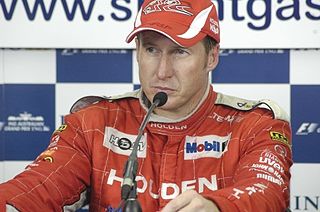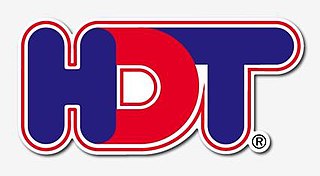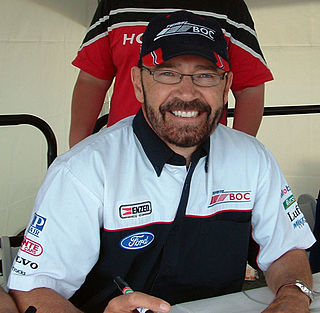Career results
| Season | Series | Position | Car | Team |
|---|---|---|---|---|
| 1977 | Australian Rally Championship | 1st | Datsun 710 SSS | Datsun Rally Team |
| 1980 | Australian Rally Championship | 1st | Datsun Stanza | Datsun Rally Team |
| 1982 | Australian Touring Car Championship | 12th | Datsun Bluebird turbo | Nissan Motor Australia |
| 1983 | Australian Touring Car Championship | 2nd | Nissan Bluebird turbo | Nissan Motorsport Australia |
| 1983 | Australian Endurance Championship | 3rd | Nissan Bluebird turbo | Nissan Motorsport Australia |
| 1984 | Australian Touring Car Championship | 11th | Nissan Bluebird turbo | Nissan Motorsport Australia |
| 1985 | Australian Endurance Championship | 12th | BMW 635 CSi | JPS Team BMW |
| 1986 | Australian Touring Car Championship | 2nd | Nissan Skyline DR30 RS | Peter Jackson Nissan Racing |
| 1986 | Australian Endurance Championship | 2nd | Nissan Skyline DR30 RS | Peter Jackson Nissan Racing |
| 1986 | South Pacific Touring Car Championship | 6th | Nissan Skyline DR30 RS | Peter Jackson Nissan Racing |
| 1987 | Australian Touring Car Championship | 3rd | Nissan Skyline DR30 RS | Peter Jackson Nissan Racing |
| 1988 | Australian Touring Car Championship | 13th | Nissan Skyline HR31 GTS-R | Peter Jackson Nissan Racing |
| 1989 | Australian Touring Car Championship | 6th | Nissan Skyline HR31 GTS-R | Nissan Motorsport Australia |
| 1990 | Australian Touring Car Championship | 13th | Ford Sierra RS500 | Peter Jackson Racing |
| 1990 | Australian Endurance Championship | 11th | Ford Sierra RS500 | Peter Jackson Racing |
Complete Australian Touring Car Championship results
(key) (Races in bold indicate pole position) (Races in italics indicate fastest lap)
| Year | Team | Car | 1 | 2 | 3 | 4 | 5 | 6 | 7 | 8 | 9 | 10 | DC | Points |
|---|---|---|---|---|---|---|---|---|---|---|---|---|---|---|
| 1982 | Nissan Motor Australia | Datsun Bluebird Turbo | SAN 10 | CAL 2 | SYM | ORA | LAK | WAN | AIR | SUR Ret | 12th | 14 | ||
| 1983 | Nissan Motorsport Australia | Nissan Bluebird Turbo | CAL 2 | SAN 4 | SYM 3 | WAN 2 | AIR 4 | SUR 4 | ORA 5 | LAK | 2nd | 160 | ||
| 1984 | Nissan Motorsport Australia | Nissan Bluebird Turbo | SAN 5 | SYM Ret | WAN Ret | SUR | ORA Ret | LAK 1 | AIR Ret | 11th | 40 | |||
| 1986 | Peter Jackson Nissan Racing | Nissan Skyline DR30 RS | AMA Ret | SYM 2 | SAN 1 | AIR Ret | WAN 1 | SUR 4 | CAL 1 | LAK 1 | WIN 2 | ORA 1 | 2nd | 212 |
| 1987 | Peter Jackson Nissan Racing | Nissan Skyline DR30 RS | CAL 3 | SYM 1 | LAK Ret | WAN Ret | AIR 2 | SUR 4 | SAN 2 | AMA 4 | ORA 2 | 3rd | 143 | |
| 1988 | Peter Jackson Nissan Racing | Nissan Skyline HR31 GTS-R | CAL | SYM | WIN | WAN | AIR Ret | LAK | SAN 8 | AMA 3 | ORA | 13th | 15 | |
| 1989 | Nissan Motorsport Australia | Nissan Skyline HR31 GTS-R | AMA 3 | SYM 10 | LAK 7 | WAN 9 | MAL 6 | SAN | WIN 1 | ORA 8 | 6th | 46 | ||
| 1990 | Peter Jackson Racing | Ford Sierra RS500 | AMA | SYM | PHI | WIN | LAK | MAL | WAN | ORA 3 | 13th | 12 |
Complete World Touring Car Championship results
(key) (Races in bold indicate pole position) (Races in italics indicate fastest lap)
| Year | Team | Car | 1 | 2 | 3 | 4 | 5 | 6 | 7 | 8 | 9 | 10 | 11 | DC | Points |
|---|---|---|---|---|---|---|---|---|---|---|---|---|---|---|---|
| 1987 | | Nissan Skyline DR30 RS | MNZ | JAR | DIJ | NUR | SPA | BNO | SIL | BAT ovr:3 cls:3 | CLD ovr:5 cls:2 | WEL ovr:4 cls:3 | FJI | NC | 0 |
† Not registered for series & points
Complete Asia-Pacific Touring Car Championship results
(key) (Races in bold indicate pole position) (Races in italics indicate fastest lap)
| Year | Team | Car | 1 | 2 | 3 | 4 | DC | Points |
|---|---|---|---|---|---|---|---|---|
| 1988 | | Nissan Skyline HR31 GTS-R | BAT Ret | WEL | PUK | FJI | NC | 0 |
Complete Bathurst 1000 results
| Year | Team | Co-drivers | Car | Class | Laps | Pos. | Class pos. |
|---|---|---|---|---|---|---|---|
| 1981 | | | Nissan Bluebird Turbo | 4 Cylinder | 30 | DNF | DNF |
| 1982 | | | Nissan Bluebird Turbo | B | 40 | DNF | DNF |
| 1983 | | | Nissan Bluebird Turbo | A | 130 | DNF | DNF |
| 1984 | | | Nissan Bluebird Turbo | Group C | 146 | 16th | 14th |
| 1985 | | | BMW 635 CSi | C | 68 | DNF | DNF |
| 1986 | | | Nissan Skyline DR30 RS | B | 114 | DNF | DNF |
| 1987 | | | Nissan Skyline DR30 RS | 1 | 157 | 3rd | 3rd |
| 1988 | | | Nissan Skyline HR31 GTS-R | A | 17 | DNF | DNF |
| 1989 | | | Nissan Skyline HR31 GTS-R | A | 160 | 4th | 4th |
| 1990 | | | Ford Sierra RS500 | 1 | 125 | DNF | DNF |
Complete Sandown 400/500 results
| Year | Team | Co-drivers | Car | Class | Laps | Pos. | Class pos. |
|---|---|---|---|---|---|---|---|
| 1982 | | Nissan Bluebird Turbo | C | NA | DNF | DNF | |
| 1983 | | Nissan Bluebird Turbo | Over 3000cc | NA | DNF | DNF | |
| 1984 | | | Nissan Bluebird Turbo | Over 3000cc | 32 | DNF | DNF |
| 1985 | | | BMW 635 CSi | A | 129 | 2nd | 2nd |
| 1986 | | | Nissan Skyline DR30 RS | B | 129 | 1st | 1st |
| 1987 | | | Nissan Skyline DR30 RS | B | 129 | 1st | 1st |
| 1988 | | | Nissan Skyline HR31 GTS-R | A | 94 | DNF | DNF |
| 1989 | | | Nissan Skyline HR31 GTS-R | A | 160 | 3rd | 3rd |
| 1990 | | | Ford Sierra RS500 | Div.1 | 161 | 1st | 1st |
Touring Car race wins (ATCC and AEC)
- 1983 Australian Endurance Championship – Silastic 300 at Amaroo Park and the Oran Park 250 at Oran Park
- 1983 Australian Grand Prix – Berri Fruit Juices Trophy – Group C Support Race at Calder Park
- 1984 Australian Touring Car Championship – Round 6 at Lakeside
- 1984 Australian Grand Prix – Group C Support Race at Calder Park
- 1986 Australian Touring Car Championship – Round 3 at Sandown, Round 5 at Wanneroo, Round 7 at Calder Park, Round 8 at Lakeside and Round 10 at Oran Park
- 1986 Australian Endurance Championship – BP Plus 300 at Surfers Paradise, Castrol 500 at Sandown, The Sun South Pacific 300 at Calder Park and the Pepsi 300 at Oran Park
- 1987 Australian Touring Car Championship – Round 2 at Symmons Plains
- 1987 Castrol 500 at Sandown
- 1989 Australian Touring Car Championship – Round 7 at Winton
- 1990 Australian Endurance Championship – Sandown 500 at Sandown






